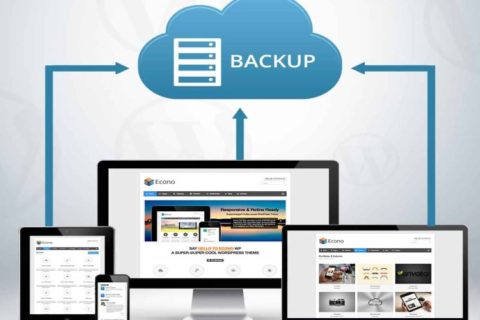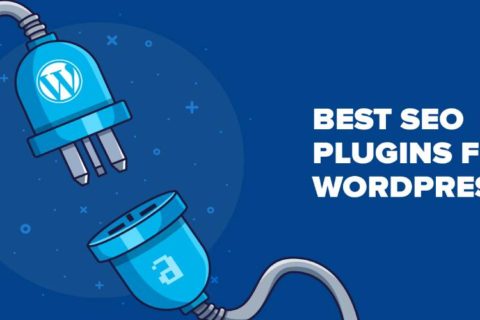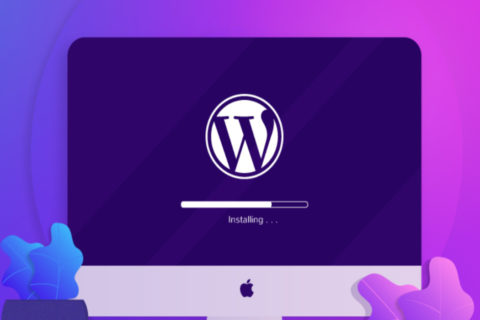Overview
WordPress is an excellent content management system. However, it has one flaw: it is slow or its speed is less. You can wind up with a slow site if you don’t take the proper safeguards. This is not only inconvenient for repeat visitors, but it will also result in the loss of subscriptions and consumers. WordPress is used by businesses all around the world to power their websites. According to ManageWP, WordPress is used by more than half of those who use a content management system or over 74 million websites.
Do you want to make your WordPress site run faster? Fast-loading sites improve user experience, boost pageviews, and aid WordPress SEO. We’ll go through the most helpful WordPress speed optimization strategies in this article to help you boost your WordPress performance and speed up your website. We’ve tried to cover everything in this blog, from why speed is crucial to what slows down your WordPress site and what you can do right now to increase your WordPress speed.
Speed test tools
A speed test tool is one of the most critical tools to utilize while you try to improve your WordPress sites. We recommend running some preliminary tests before making any modifications, followed by a follow-up test after each modification. This can help you determine whether something has a favorable or negative effect on the speed of your site. Site speed matters! Site performance is more important than ever before, not only for ranking higher in SERPs but also for providing a better user experience and achieving higher conversions.
Back in 2010, Google declared that the speed of your desktop site affected your SERP rank. However, Google declared in 2018 that the speed of your mobile site has an impact on your ranking. As a result, if you want to enhance your organic traffic from desktop and mobile devices, you’ll need to optimize the speed of your WordPress website.
What are the benefits of speeding up WordPress?
There are a variety of causes for this, some of which may raise big problems for you:
- Fast-loading websites will be ranking higher by search engines (such as Google) than slow-loading websites. As a result, increasing your speed should be one of your top goals if you want to increase your ranking in the SERPs.
- According to studies, a site loading time of more than 2 seconds causes over half of all visitors to abandon the site. As a result, you need to speed up your WordPress to retain around half of your visitors interested.
- The most impatient shoppers are those who shop online; they anticipate the website to load in less than a second. So, if you’re running an e-commerce store on WordPress, you’d better get ready to make some significant changes in order to make your business more profitable.
How can you test your website’s loading speed?
First and foremost, you must assess your website’s current load time. Keep in mind that this speed can vary from page to page due to a variety of factors, including:
- the size of the page,
- the number of requests it creates,
- whether it is cached or not, and,
- Finally, the type of content (static or dynamic) it hosts.
A website’s homepage is commonly used as a baseline for determining load time. The following three tools are widely used across the internet to check a website’s speed:
- WebPageTest.org
- Tools.Pingdom.com
- PageSpeed Insights
When someone visits your website for the first time, you just have a few seconds to grab their attention and persuade them to stay. According to a Microsoft Bing search team report, a two-second delay in page responsiveness reduced user happiness by 3.8 percent, increased lost revenue per user by 4.3 percent, and reduced clicks by 4.3 percent. If your site takes too long to load, most visitors will abandon it before you even get an opportunity to engage them. Not only that, but Google’s ranking algorithm now takes site speed into account. That means that your site’s performance has an impact on SEO, so if your site is slow, you’ll lose visitors due to impatience and see a drop in search engine results.
How To Speed Up WordPress
Use a solid framework/theme:
A theme or framework is the foundation of every WordPress site. Because each theme is coded differently, there are some that are better than others. Because it is so lightweight, the default WordPress themes, such as Twenty Fifteen, are quite quick. WordPress themes that include many dynamic features, such as sliders, widgets, social icons, and other flashy elements, are very enticing to the eye. They will definitely cause your webserver to thrash if they have too many elements and larger page sizes.
While there are many excellent themes available, you should be aware that developers frequently add new features in order to increase sales. The best solution is to utilize lightweight themes in this case. One option is to use one of the WordPress default themes.
Choose a better web hosting provider:
Your WordPress website’s hosting is an important factor in determining its speed. Hosting your new website on a shared hosting company that offers “unlimited” bandwidth, space, emails, domains, and other features may appear to be a fantastic choice. Because you’re sharing server space with dozens of other websites, shared hosting has a lower performance. Furthermore, you have no idea how well the servers are optimized.
Last but not least, they provide excellent customer service, which is critical when it comes to hosting. Take it from someone who has experienced it firsthand. Our team is pleasant, patient, and knowledgeable about WordPress. They’ll act as a safety net in the event of a problem.
Reduce image sizes:
Images are the most significant contributions to a webpage’s size increase. The key is to shrink the image size without sacrificing quality. The process will take a long time to use the Chrome PageSpeed Insights extension, Photoshop, or other tools to manually optimize the photos. Plugins are available for almost anything you can imagine, including image optimization.
Fortunately, a fantastic, free plugin called WP-SmushIt will automatically do this for all of your images as you upload them.
Minify JS and CSS files:
Minification of resources entails deleting characters from HTML, JavaScript, and CSS that aren’t required for loading, such as White space characters, Newline characters, Comments, Block delimiters. This decreases the amount of code that needs to be requested from the server, which speeds up your load times. Moreover, it’s critical to reduce the number of HTTP queries that WordPress performs.
If you use the Google PageSpeed Insights tool to analyze your website, you will most likely be advised to reduce the size of your CSS and JS files. This implies you can improve site loading speed by reducing the number of CSS and JS calls as well as the size of those files. Some plugins can assist you in reaching this goal, the most prominent of which being Autoptimize, which can help you optimize your WordPress website’s CSS, JS, and even HTML.
Use advanced caching mechanisms with a caching plugin:
WordPress caching plugins (such as W3 Total Cache) make the difficult work of setting cache rules to your website elements much easier. Combining such plugins with advanced caching techniques like Varnish can significantly improve your website’s loading speed. As a result, WordPress’s performs better.
WordPress plugins are quite useful, but some of the greatest is in the caching category, as they significantly reduce page load times, and best of all. Moreover, they’re all free and simple to use on WordPress.org. Simply install and activate W3 Total Cache, and your page will load faster as items are cached.
Use a CDN:
Visitors to your website come from all over the world, and the speed at which your site loads will vary depending on where your site is hosted. Many CDNs (Content Delivery Networks) are available to help reduce site loading times to a minimum for visitors worldwide. A CDN stores a duplicate of your website in multiple data centers around the world. A CDN’s main job is to serve a webpage to a visitor from the closest location possible. Among the most popular CDN services are Cloudflare and MaxCDN.
In essence, a CDN, or content delivery network, takes all of your static assets (CSS, Javascript, and images, etc.) and serves them on servers as close to your visitors as feasible. This allow users to download them as quickly as possible.
Cleanup WordPress database:
By deleting unnecessary data from your database, you can keep its size down while also reducing the size of your backups. Spam comments, false accounts, previous draughts of your work, and perhaps unwanted plugins and themes must all be removed. All of this will help WordPress run faster by reducing the size of your databases and web files.
If you don’t keep your database optimized, WordPress will start to slow down. Disabling or limiting post revisions, deleting old revisions, and being mindful of the WordPress limit of 100 pages are all options for keeping your database clean.
Deactivate or uninstall plugins:
Keeping unnecessary plugins on your WordPress websites adds a lot of garbage to your web files. Furthermore, while backup files are being made, it will increase the size of your backup and place an excessive amount of load on your server resources. It’s a good idea to eliminate any plugins you don’t use and seek other ways to automate or schedule chores using third-party services. IFTTT and Zapier are two web services that can help you automate these operations and save up server and website resources.
What Causes Your WordPress Site to Slow Down?
Several recommendations for improvement will almost certainly be included in your speed test report. Understanding what causes your website to slow down is crucial to boosting performance and making better long-term decisions. The following are the key causes of a slow WordPress website:
- Web hosting – If your web hosting server isn’t configured properly, it can slow down your website.
- WordPress Configuration – If your WordPress site isn’t serving cached content, your server will get overburdened. This can cause your website to run slowly or even crash.
- Page Size – Images that haven’t been optimized for the web.
- Bad Plugins – Using a plugin that is badly coded can cause your website to load slowly.
- External scripts – External scripts, such as advertisements and font loaders, can significantly impact the performance of your website.
Bottom Line
The most significant benefit of reducing your website’s loading time is that it will significantly improve your visitors’ experience. It will also help you rank higher in the SERPs. After all, using less bandwidth on your hosting and having a faster site loading speed on the client-side will only benefit you in the long run.
It’s done! We hope you found this post useful in learning how to speed up and enhance the performance of WordPress. Don’t be afraid to experiment with these methods. Remember to test the speed of your website before and after you follow these recommended practices. You’ll be astonished at how much these improvements improve WordPress performance. If you find this blog interesting, please check our rest blogs too. Please browse our website and check out our services and technologies we use. If you have any queries, then please do contact us. We feel happy to hear from you!




